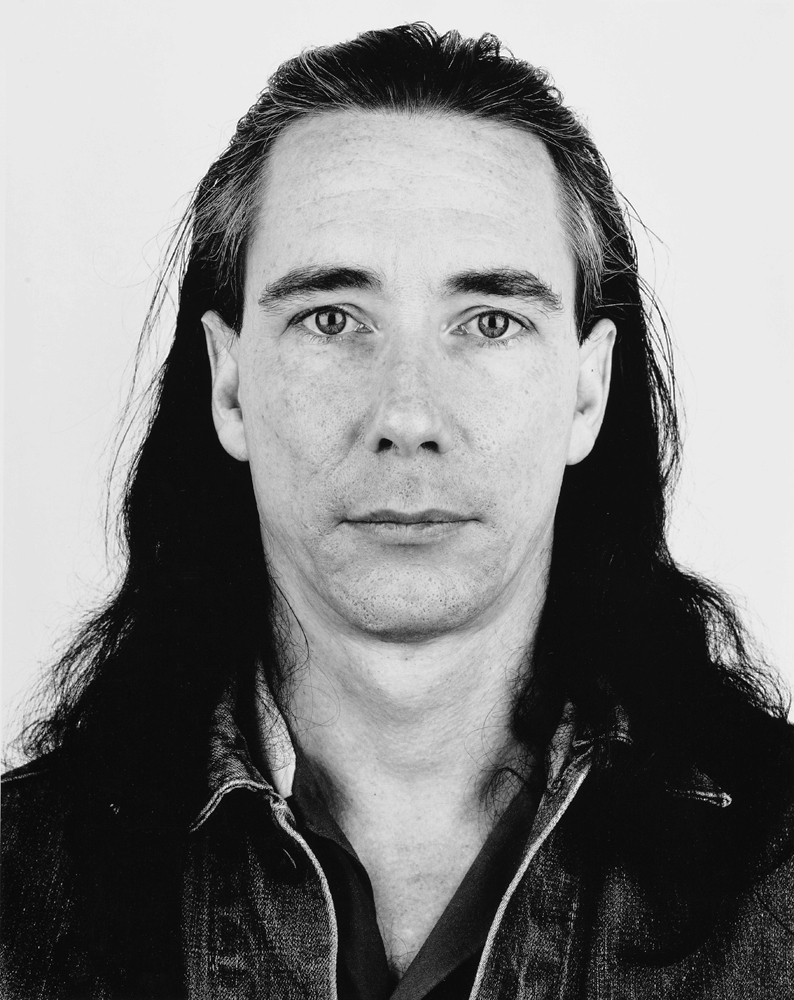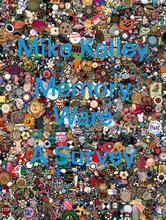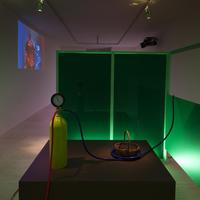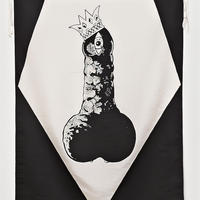More about Mike Kelley
- All
- Info
- Shop
Works by Mike Kelley

Contributor
The Village Voice described Mike Kelley best when calling him a pioneer of “clusterfuck aesthetics” and as soon as you see his work, you can see why.
Known for sewing together stuffed animals of every species, size and color and creating giant and extremely off-putting installations, Mike Kelley’s style is nothing if not peculiar. You could say that if the art world is a circus, then Mike Kelley was its ringleader…its sadomasochistic, deeply disturbed ringleader.
Mike Kelley’s artistic career began with music rather than art. He was in a Detroit-based band called “Destroy All Monsters” which was said to put on shows “so extreme [that] they approached performance art.” He soon bailed on the music thing to do the art thing in California. He went to CalArts after which he quickly became famous, though this was not his intention. Kelley said, “I chose to become an artist because I wanted to be a failure. When I was young, if you wanted to really ostracize yourself from society, you became an artist.” He was of course the only person in LA to think this way, as everyone else in la-la land assumes they are going to be a big star.
Most of the time, people have no idea how to react to Kelley’s work. It bridges low and high art, fantasy and reality, and the spiritual and the sacrilegious. Again, the Village Voice described it best by calling it “a manic-depressive panic attack in the face of information overload,” “wall-to-wall pandemonium,” and a “homeopathic dose of poison.” Needless to say, Mike Kelley was a nut. But he was our nut.
Only the good die young. Mike Kelley died when he was only 57. It was said to have been suicide due the increasingly corporate state of the art world at the time. Kelley was aptly described as “an irresistible force in contemporary art” and a memorial was quickly erected for the artist made of fabric toys, afghans, dried corn and wax-candles entitled “MORE LOVE HOURS THAN CAN EVER BE REPAID AND THE WAGES OF SIN” after the artist’s own work of the same name. It was simultaneously really creepy and really sweet, much like Kelley's artwork.

Contributor
Mike Kelley’s artistic career is the epitome of turn of the millennium artwork: unconventional and existential.
Kelley’s body of artworks spans every sort of medium you can think of; he has made paintings, drawings, performances, massive installations, stuffed animals, and resin-cast cities inside bell jars. Uncertainty permeated the period of the 1990s and early 2000s. Artists like Kelley reflected this ambivalence within their work by interpreting artwork of the past while reflecting the epochal changes of the present. Though formally discombobulated, Kelley’s work continuously falls into an existential theme, and Kelley has suggested that death is the uniting subject, which is made all the more poignant considering how the artist met his. Kelley died from an apparent suicide when he was only 57.
Another common theme within Kelley’s work is the concept of trauma and its relationship to memory, or Repressed Memory Syndrome, in which memories of traumatic events are repressed and stored deeply within the subconscious. He visits this theme in his piece Educational Complex, in which he reconstructs every school he ever attended in architectural models, leaving out sections he couldn’t remember. According to this concept, this lack of memory suggests these places are associated with trauma. In his Kandors series, he extensively constructs Superman’s home city of Kandor, depicted in the DC comic series with major inconsistencies. Within the context of Kelley’s artwork, these variations represent the traumatic loss of Superman’s home planet, Krypton.
Art historian and critic (and former professor of mine) fondly wrote of Kelley, “Has any artist painted the anus more frequently, more lovingly, more ludicrously, than he?” What an icon. Every artist should aspire to be the great painter of anuses. Kelley himself admitted to returning to the motif of the scatological (AKA poop). This same professor described Kelley’s relationship with the color yellow as relating to “the color of bananas, the color of piss.” Throughout his work, Kelley tended to return to the most basic and essential elements of the human experience: sex, death, and excrement.
Sources
- Baker, George. "Mike Kelley: Death and Transfiguration." October 139 (2012): 183-91. www.jstor.org/stable/41417924.
- Mike Kelley: Kandors. Venus Over Manhattan, 2016. https://www.venusovermanhattan.com/exhibitions/mike-kelley/selected-wor…
- Mike Kelley Kandors 1999 – 2011, Hauser & Wirth, (2017). https://www.hauserwirth.com/hauser-wirth-exhibitions/5933-mike-kelley-k…
- Miller, John, and Mike Kelley. "Mike Kelley." BOMB, no. 38 (1992). www.jstor.org/stable/40424175.
Featured Content
Here is what Wikipedia says about Mike Kelley (artist)
Michael Kelley (October 27, 1954 – c. January 31, 2012) was an American artist whose work involved found objects, textile banners, drawings, assemblage, collage, performance, photography, sound and video. He also worked on curatorial projects; collaborated with many other artists and musicians; and left a formidable body of critical and creative writing. He often worked collaboratively and had produced projects with artists Paul McCarthy, Tony Oursler, and John Miller. Writing in The New York Times, in 2012, Holland Cotter described the artist as "one of the most influential American artists of the past quarter century and a pungent commentator on American class, popular culture and youthful rebellion."
Kelley agreed to an interview by Tulsa Kinney from Los Angeles-based Artillery magazine, which was conducted two weeks before his death.
Check out the full Wikipedia article about Mike Kelley (artist)













